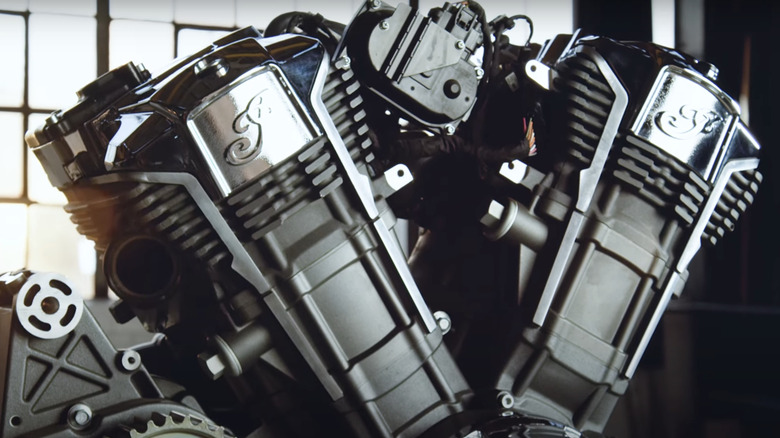Everything You Need To Know About Indian's Most Powerful Motorcycle Engine
Indian Motorcycle bills itself as "America's First Motorcycle Company," with a legacy dating back to 1901 and a proud history of race, street, and stunt bike construction. Indian has rivaled Harley-Davidson as the nation's top developer of powerful V-twin engines since the technology emerged at the beginning of the 20th century and may have leapfrogged its close competitor with its latest effort, a motor it christened the PowerPlus 108 to honor a model it produced between 1916 and 1924.
The bike Burt Munro used to set the 1967 land speed record of more than 190 mph was a Scout with a PowerPlus engine that Munro had modified himself. His feat was memorialized in the 2005 film "The World's Fastest Indian," which starred Anthony Hopkins as Munro, and Munro's record still stands today.
The new PowerPlus 108 is Indian's most potent stock engine ever, producing 122 hp and 128 ft-lbs of torque. It will be immediately available in two bikes, the Challenger and the Pursuit.
The PowerPlus108 was rigorously tested
Indian claims it put the 108 cubic inch (1769 cc) liquid-cooled, eight-valve overhead cam engine through nearly one million miles of simulated testing, plus more than 250,000 on the road. In a promotional video, Indian senior engineer Jay McKoskey highlights some technological details that allowed his team to wring every last bit of power out of the new engine. "The liquid cooling is really critical," he says. "it allows the engine temperature to be controlled really consistently and to a lower temperature overall. The bike's air box is a little larger than would be typical, and it's placed right above the engine; that's very useful."
The liquid cooling in the PowerPlus V-twin was also employed to flatten out the torque curve, and Indian's engineers worked hard to balance the motor's torque and power output evenly.
Kevin Cameron of Cycle World detailed how they also managed to maximize the efficiency of the kinetic and heat energy transfer inside the engine, which led to a final product that runs cleanly and smoothly. He was able to look at the internal components of one of Indian's test motors.
"This engine had completed 135 hours of running that alternated between peak torque and peak power," he wrote. "I went to the pistons. There was not a mark on them. This is the message of modern design: When oil is always present, and its temperature and quality are within limits, wear is near zero."
